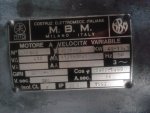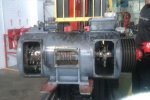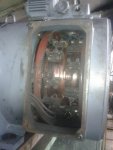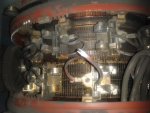zbang
Senior Member
- Location
- Roughly 5346 miles from Earls Court
Some folks have been using this motor on a printing press and in all my old books, I can't find much about them. From what I could get, it's a repulsion motor and that the brushes short across the armature, moving them changes the pole position(?) thus varying the speed. The owner tells me than if you move the lever from one end to the other while it's running, it'll spark something fierce when it reverses.... I wouldn't recommend doing that.
Any pointers to better info? (No photos of the brushes at the moment, I'll be back there later next week and get some.)


Any pointers to better info? (No photos of the brushes at the moment, I'll be back there later next week and get some.)








